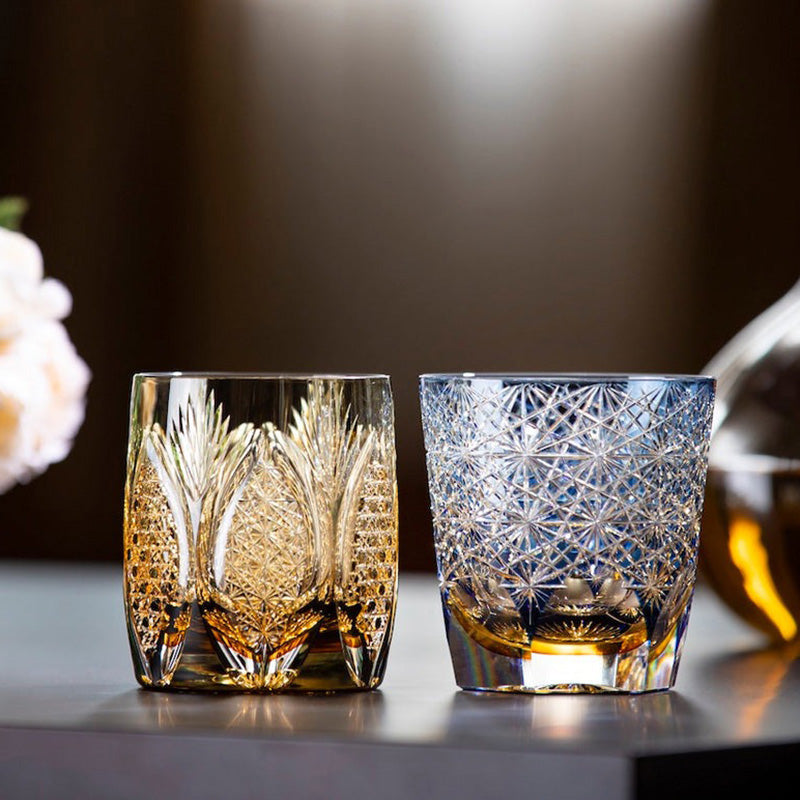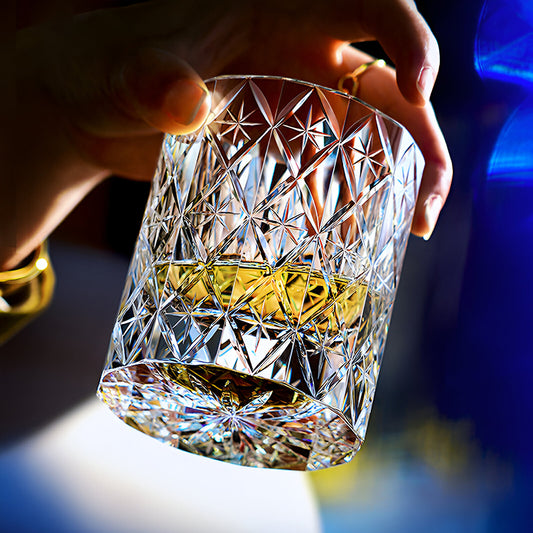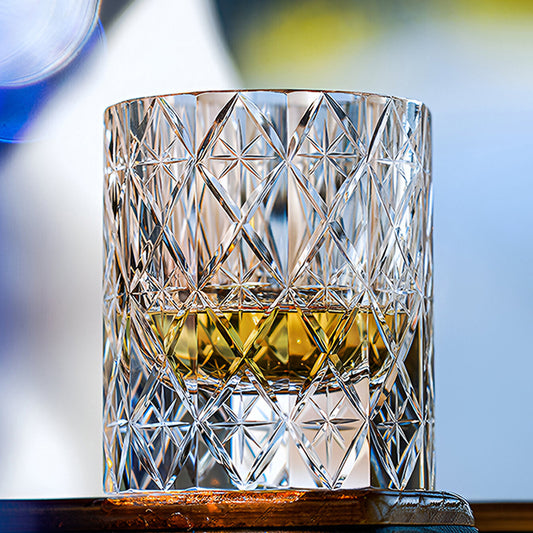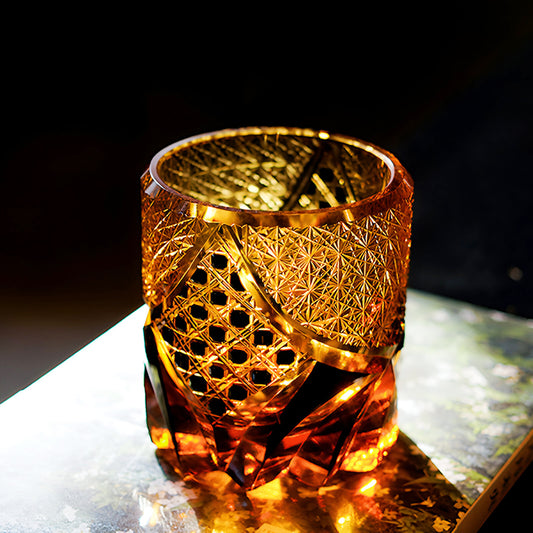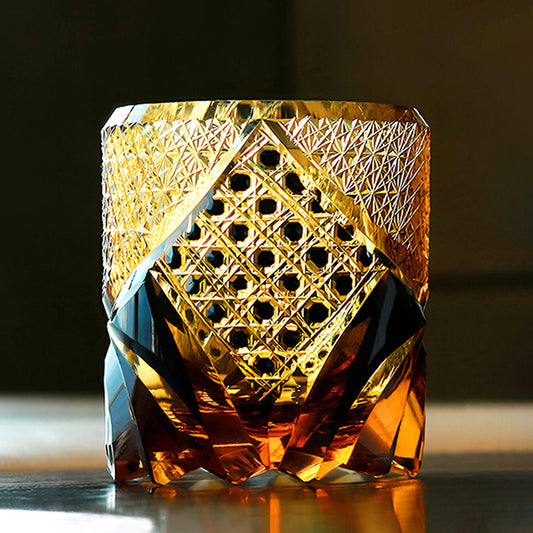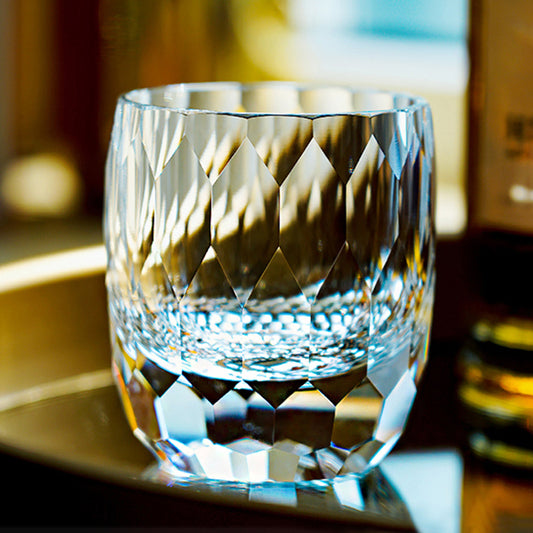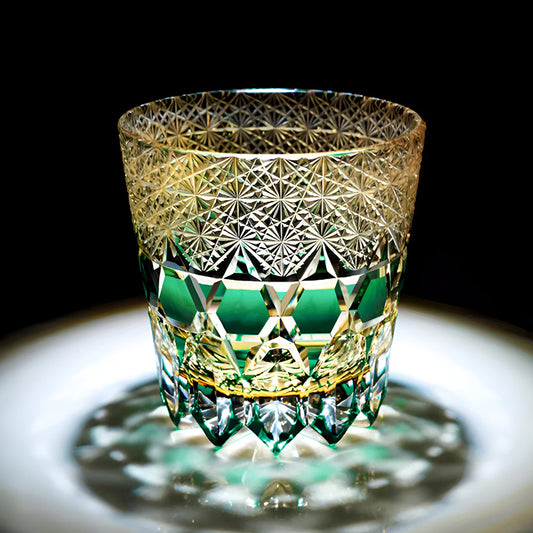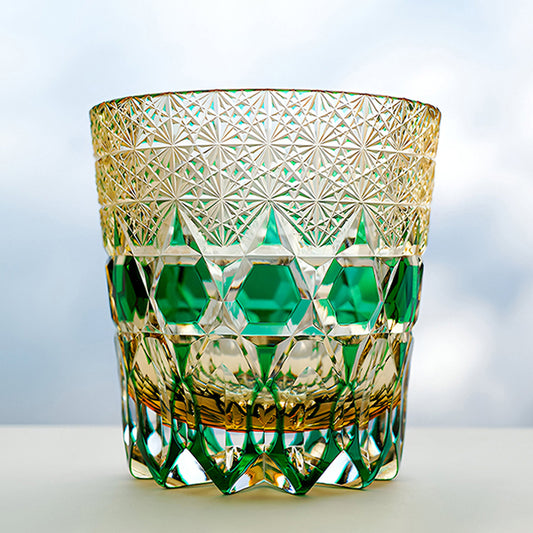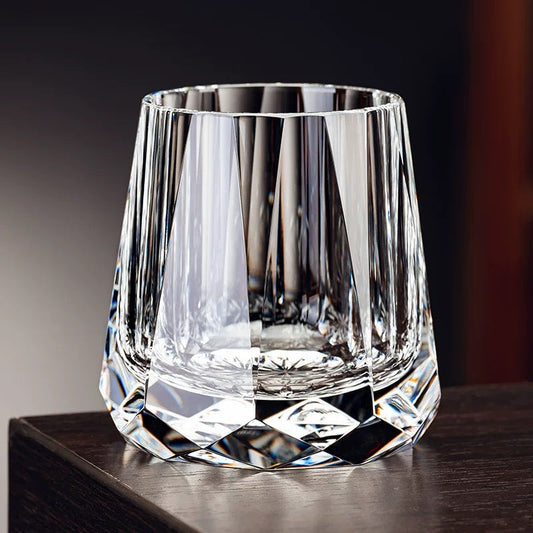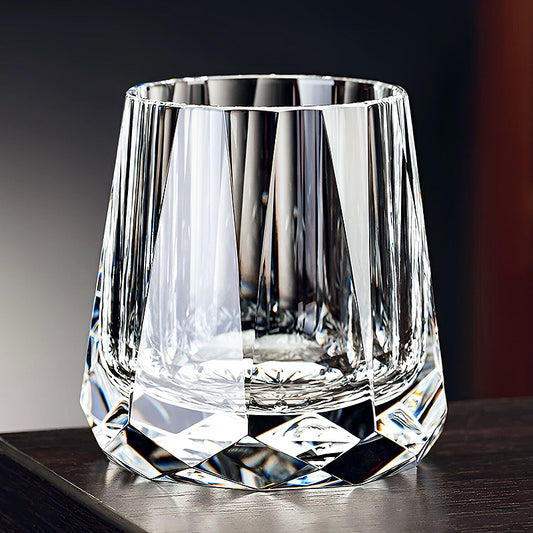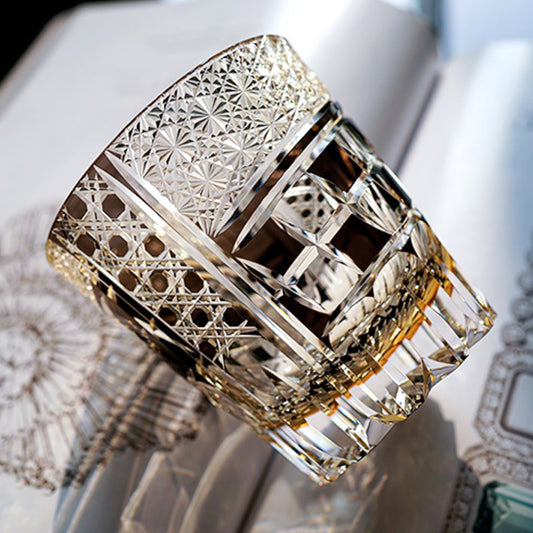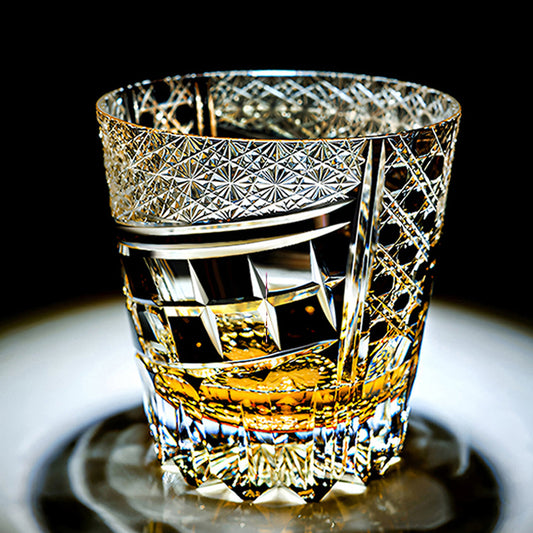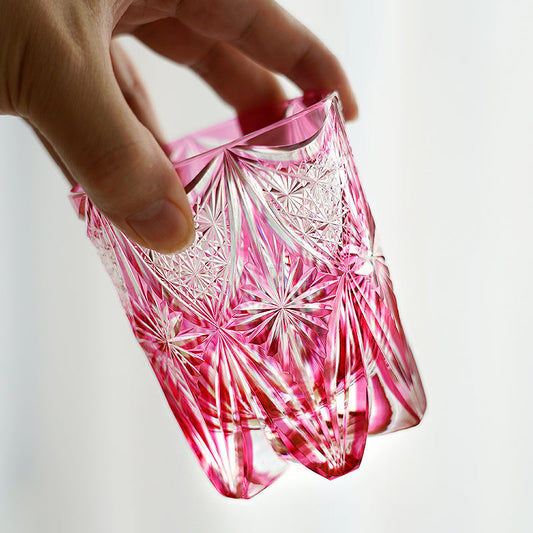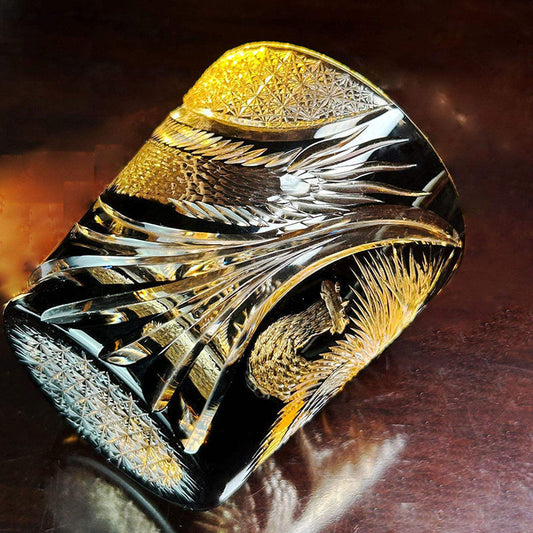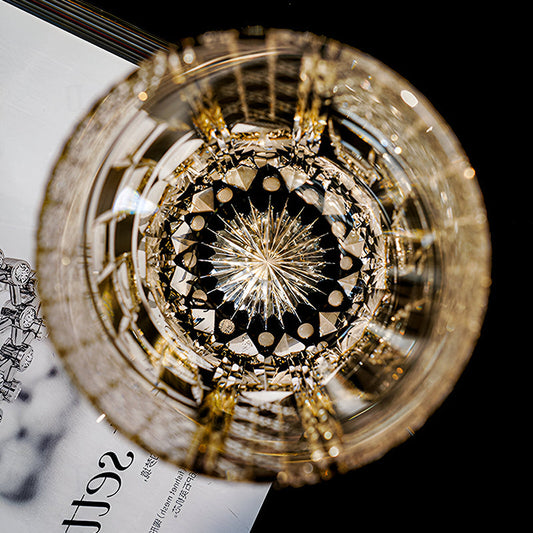Unique Craftsmanship:
The production of Edo Kiriko requires long-term training and professional skills to master; a craftsman can only produce one to two Kiriko cups in a day. The production process involves multiple steps such as design, cutting, polishing, and engraving, each requiring the artisan's exceptional skills and patience. During the engraving process, there is no sketching involved; it solely relies on the artisan's craftsmanship and experience. Achieving mastery in this craft takes years of dedication; without a decade of practice, it is challenging to reach a level of perfection. This craftsmanship demands not only precision in cutting but also high standards in color, lines, and gloss, with each detail testing the craftsman's steadiness and perception.

Unique Design and Pattern:
Edo Kiriko is renowned for its unique artistic value and design style. Originating from the Edo period in Japan in 1834, Edo Kiriko has become an art form among contemporary glassware due to its exquisite craftsmanship and distinct design style. Its characteristics include vibrant colors, smooth lines, fine cutting, transparent gloss, and exquisite patterns. These features make Edo Kiriko not only a daily necessity but also an elegant piece of art and collectible item.

Scarcity and Preciousness:
Due to the complex production process of Edo Kiriko that requires exceptional skills, as well as the time and effort needed for the craft's inheritance, each piece of Edo Kiriko is rare and precious. Craftsmen dedicate a significant amount of time and effort to create each piece, resulting in limited production of Edo Kiriko. This scarcity makes it a sought-after treasure among collectors and art enthusiasts.

The value of Edo Kiriko lies in its exquisite craftsmanship, unique design, scarcity, cultural significance, and the importance of traditional heritage.


